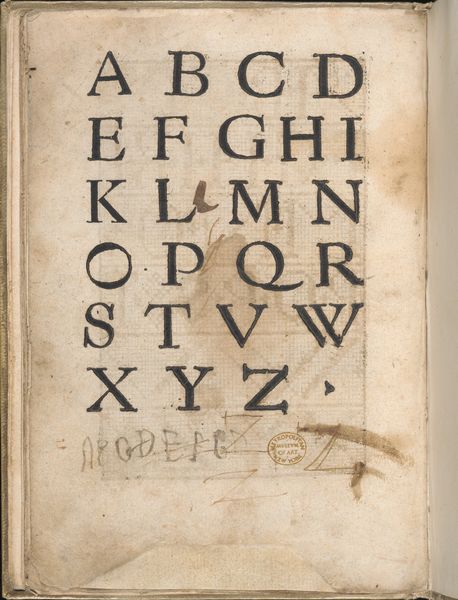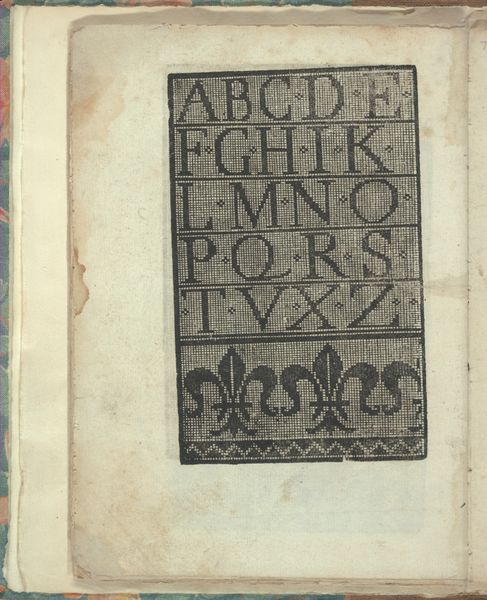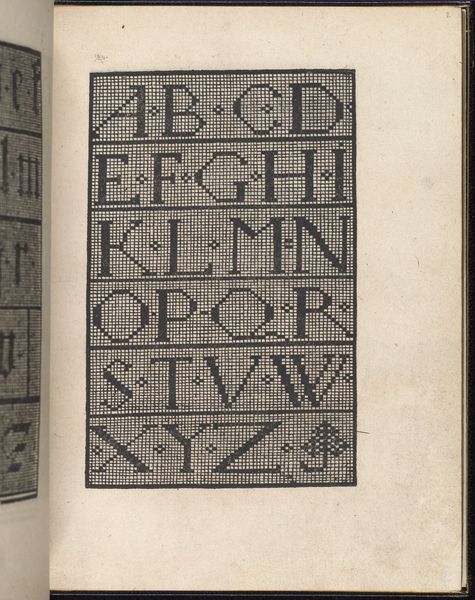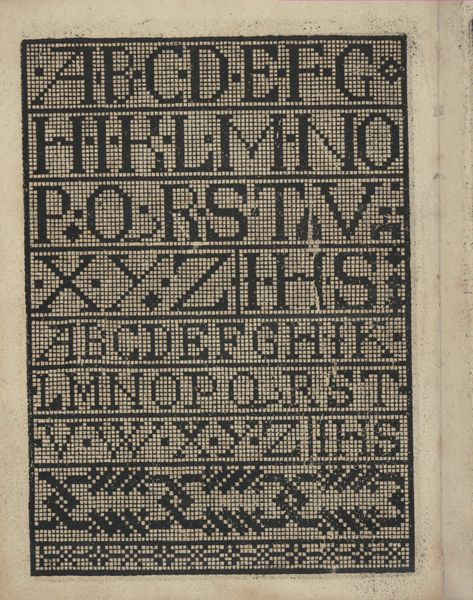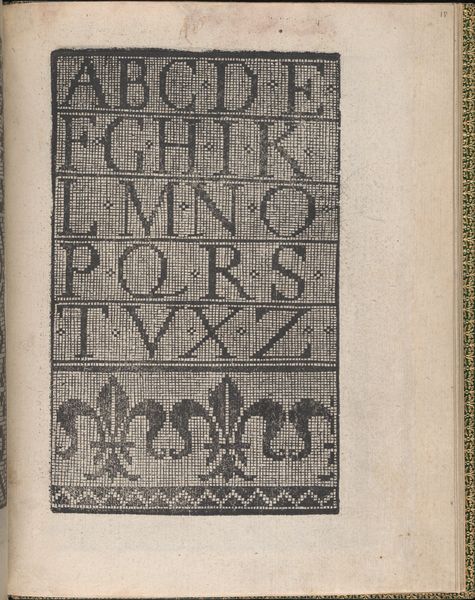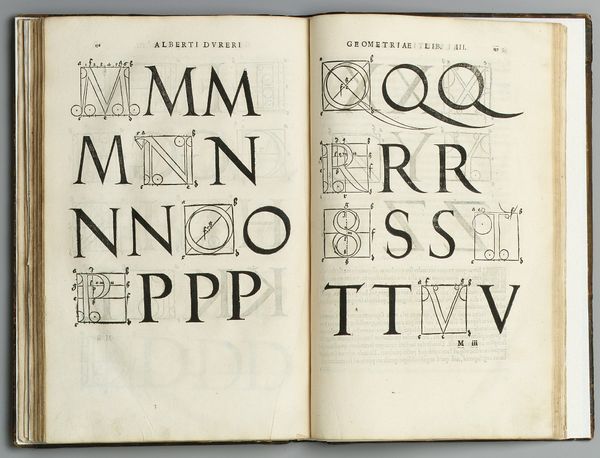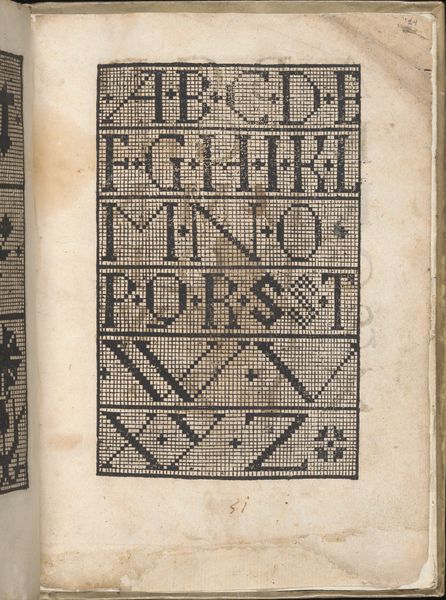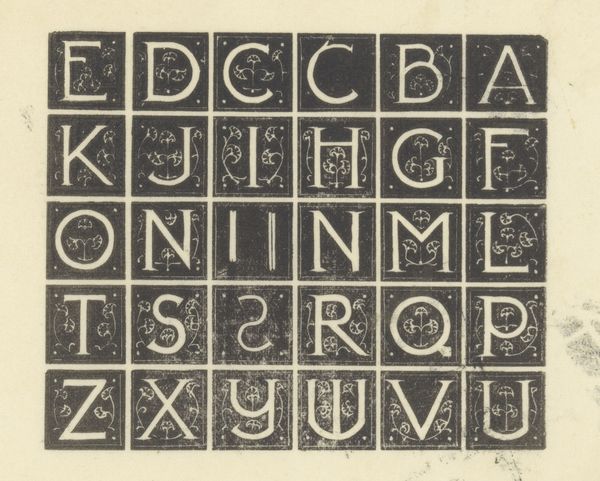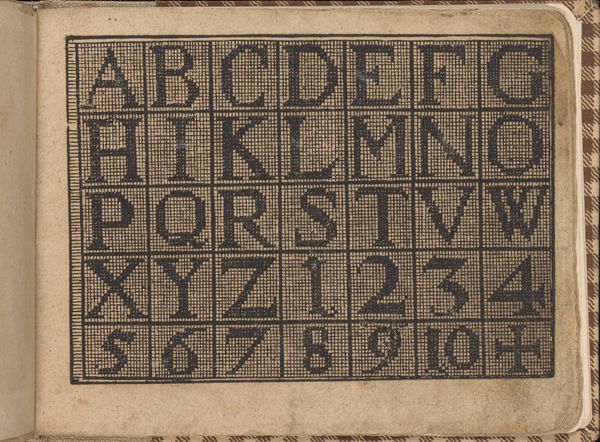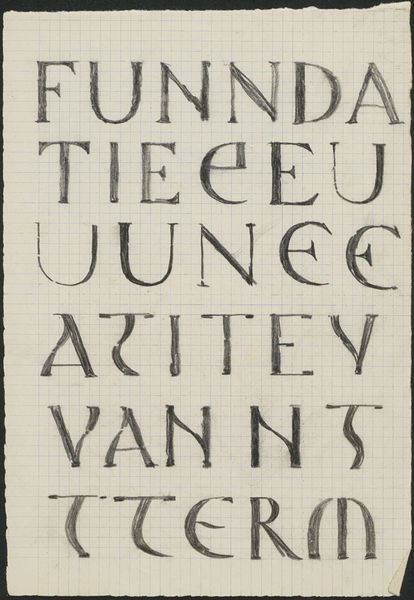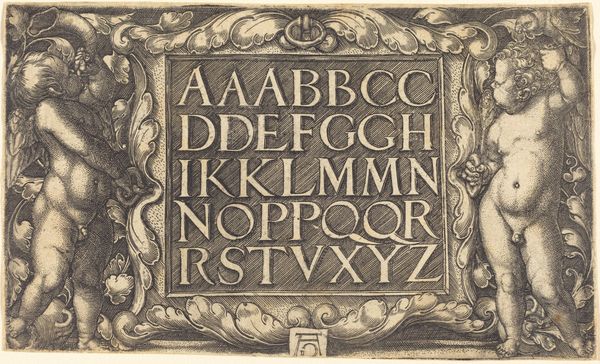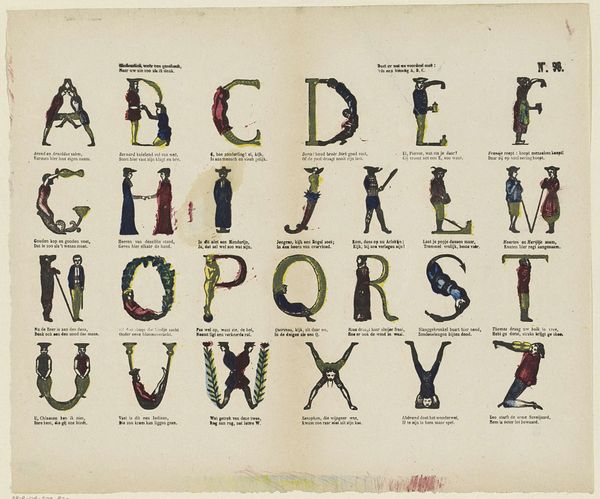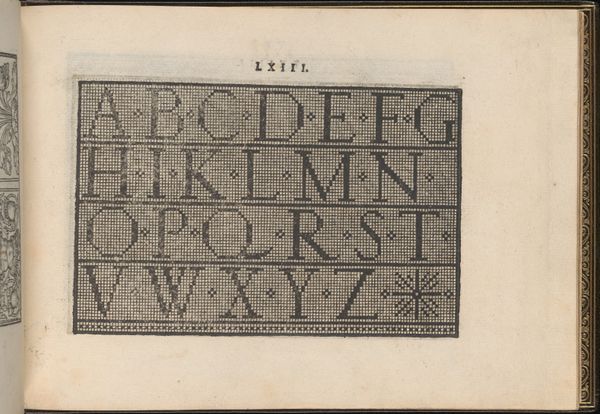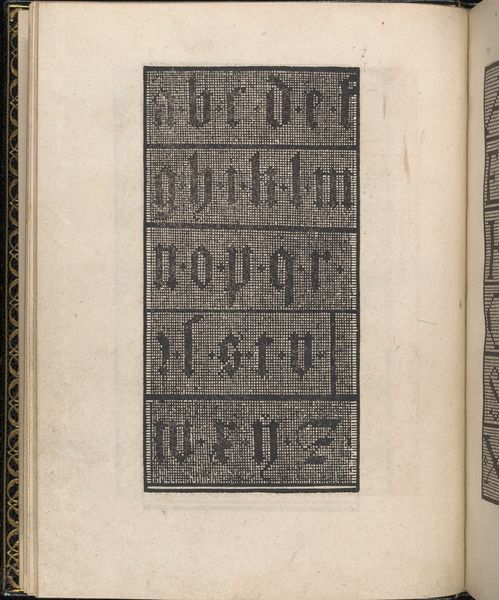
Ce est ung tractat de la noble art de leguille ascavoir ouvraiges de spaigne... page 8 (recto) 1527 - 1540
0:00
0:00
drawing, ornament, print, typography
#
drawing
#
ornament
# print
#
typeface
#
book
#
typography
#
italian-renaissance
Dimensions: Overall: 6 7/8 x 5 11/16 in. (17.5 x 14.5 cm)
Copyright: Public Domain
Curator: So here we have Willem Vosterman's "Ce est ung tractat de la noble art de leguille ascavoir ouvraiges de spaigne... page 8 (recto)," dating from around 1527 to 1540. It's a printed page, displaying a rather stark alphabet and a small flourish beneath. Editor: It strikes me as incredibly functional. It’s an alphabet, pure and simple. What do you see beyond the obvious utility? Curator: Exactly! Let's not dismiss that utility. It points directly to the means of production, the labour involved in crafting not just the image, but the very idea of standardised, reproducible knowledge. What was the social context for such an endeavor? Editor: Well, it's Renaissance, so I'd imagine the printing press and burgeoning literacy rates had something to do with it. A demand for readily available information? Curator: Precisely! Consider the materiality. It's a print - a *mass*-produced object. How does that challenge the traditional idea of the unique artwork, the "high art" object, prized for its singular aura? This alphabet, a seemingly simple thing, collapses the distinction between art and craft. How does the creation of this typeface differ from creating embroidery patterns in Spain at this same time? They both facilitate broader creation. Editor: I hadn't thought of it that way. So, it’s not just about the alphabet itself, but what that alphabet *does*? How it facilitates broader literacy and democratization of knowledge. Curator: Precisely. And let's not forget the paper, the ink, the press—all components within a wider network of materials and labour. It forces us to consider art not just as image, but as object embedded within material processes. It becomes an archaeological artifact. Editor: That gives me a lot to consider. Thanks, it's so interesting to look at it through the lens of production and access.
Comments
No comments
Be the first to comment and join the conversation on the ultimate creative platform.
